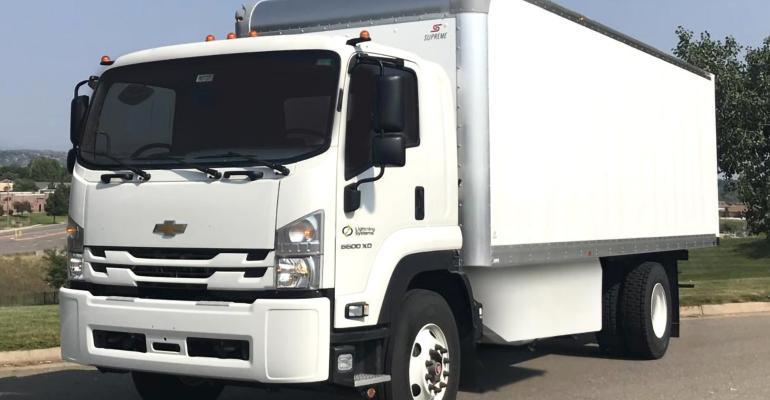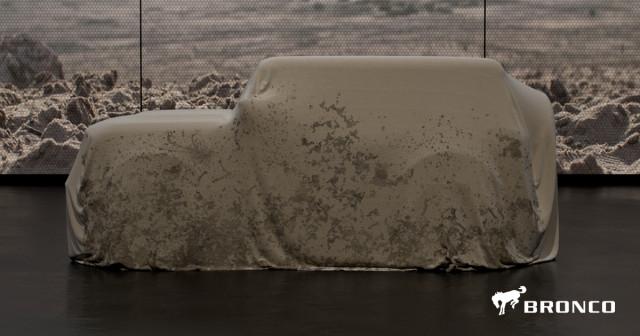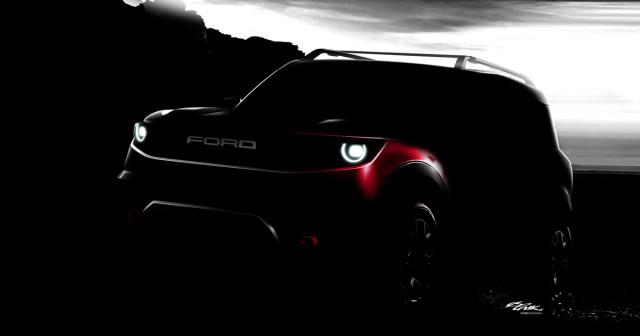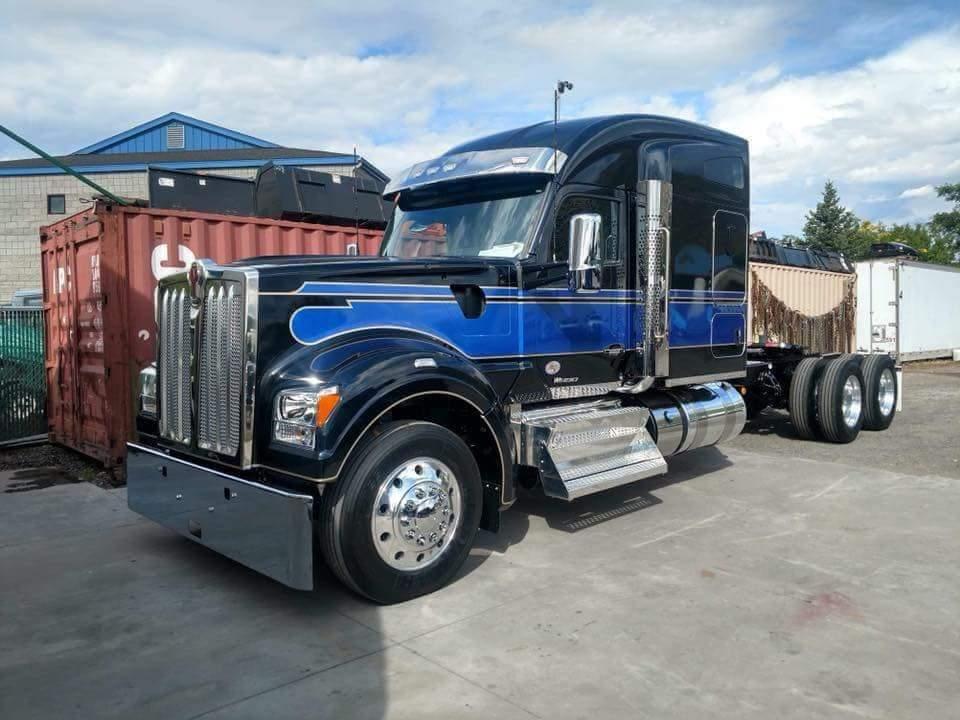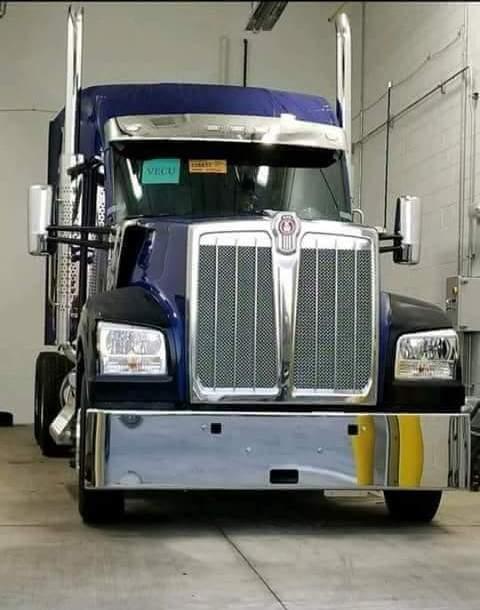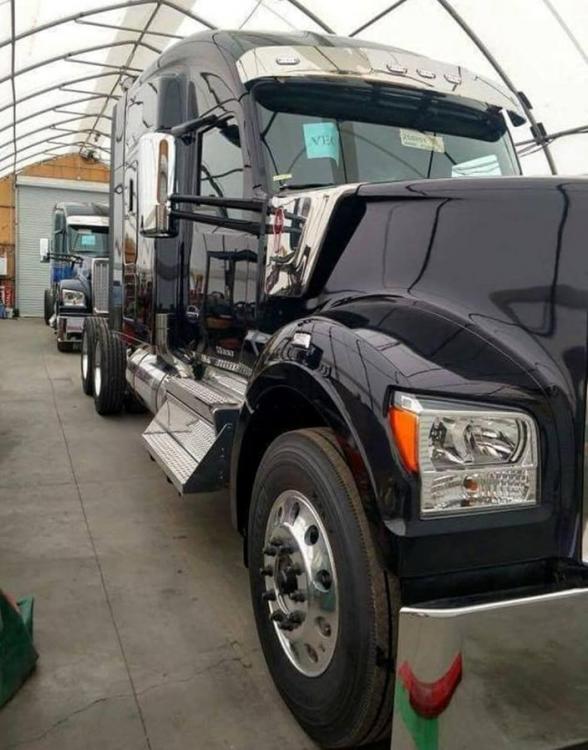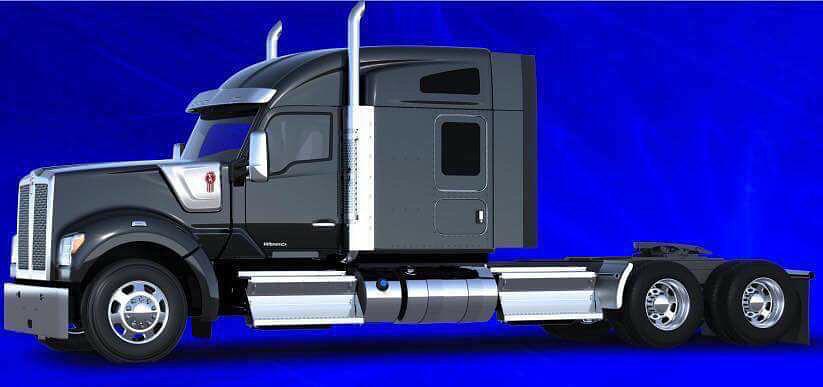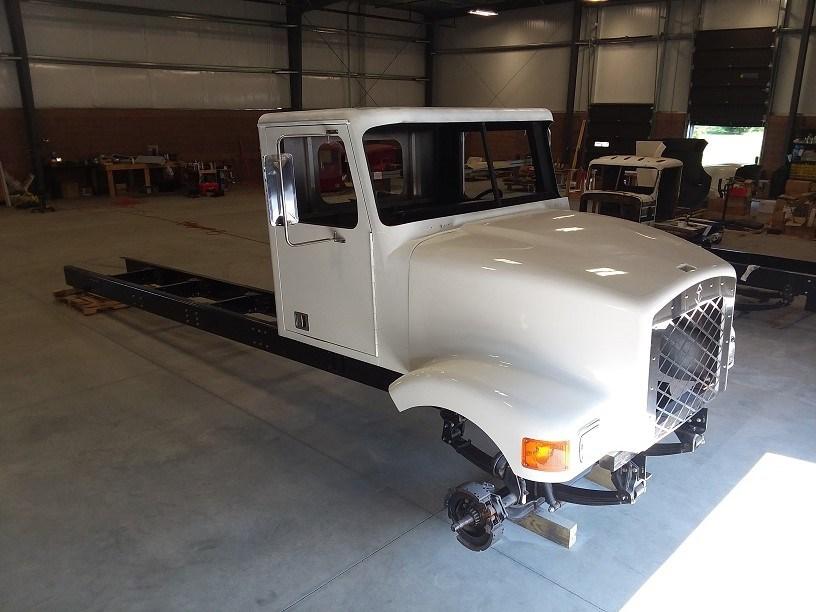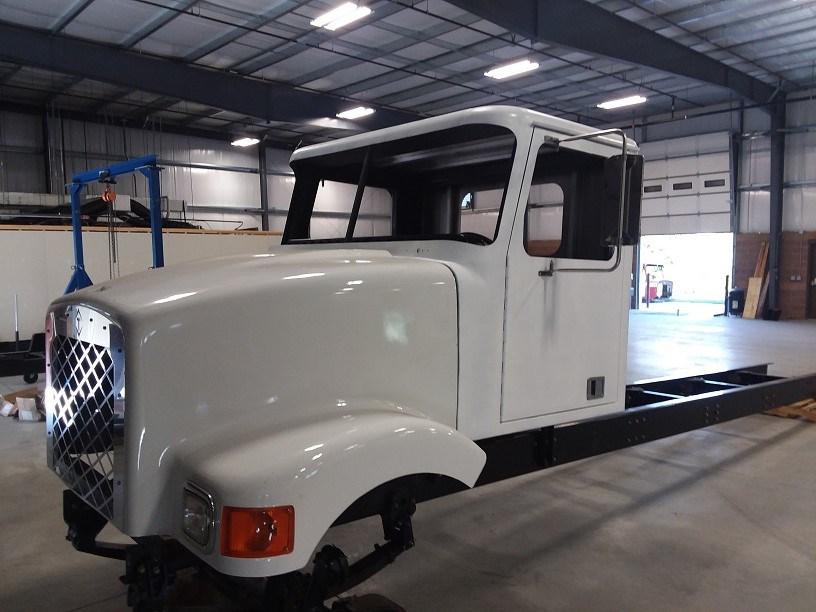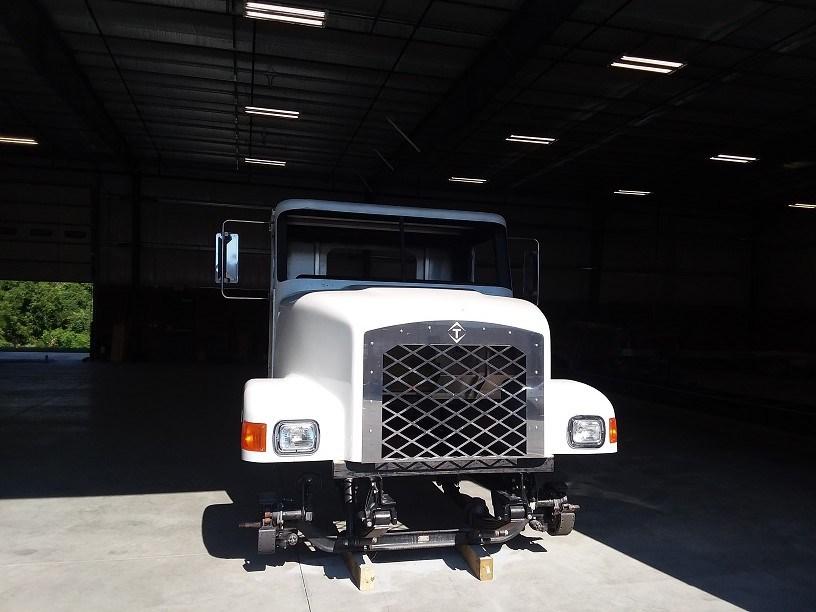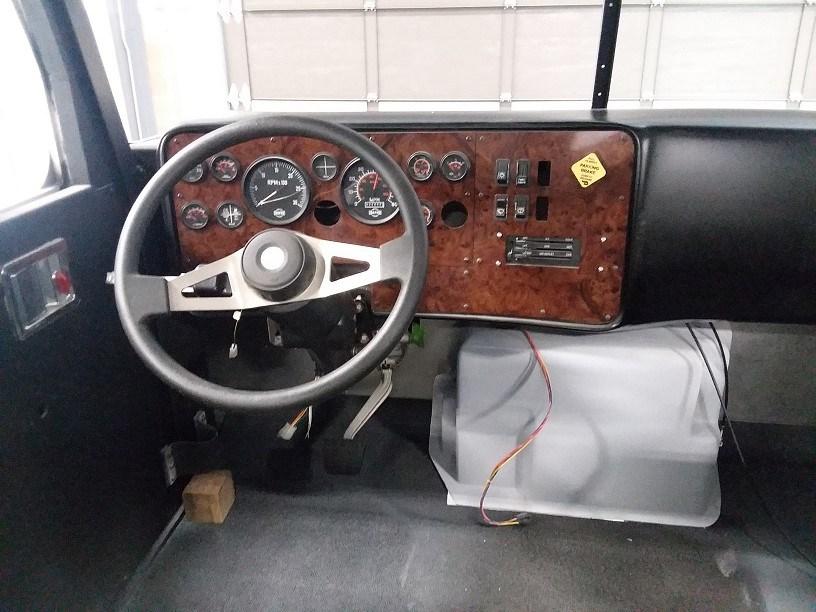
kscarbel2
Moderator-
Posts
18,854 -
Joined
-
Days Won
114
Content Type
Profiles
Forums
Gallery
Events
Blogs
BMT Wiki
Collections
Store
Everything posted by kscarbel2
-
Ford aims to spread Mustang's DNA Michael Martinez, Automotive News / August 27, 2018 DETROIT — After 10 million vehicles over 54 years, the Mustang remains one of the most vital nameplates in Ford Motor Co.'s stable. It's Exhibit A for what the Ford brand wants to stand for: bold, emotional designs that elicit passion among its customers. The rest of its cars lack that cachet, which is why, after the Fusion sedan disappears from showrooms early next decade, the Mustang effectively will be Ford's last car standing as the brand shifts to a lineup dominated by pickups and utility vehicles. Now, Ford is trying to re-create that Mustang magic in its crossover and SUV lineup. One vehicle in particular, a yet-to-be-named battery-electric crossover, was heavily inspired by the Mustang; Ford floated the name Mach 1 for it this year, though the production version is likely to get a different moniker. "It's core to what people see Ford as," Carl Widmann, the Mustang's chief engineer, told Automotive News. "We wanted a vehicle that would draw people to the showroom floor. There's clear evidence that's the case." The Mustang has been the best-selling sports coupe in the U.S. since its redesign in 2014. Ford began selling the Mustang globally in 2015 and now sells it in more than 140 markets, including China, Germany and Australia. Despite the Mustang's importance to the company, CEO Jim Hackett reportedly pushed back the seventh-generation program by about a year. A redesigned Mustang now is expected in 2021. The car rides on an exclusive rear-wheel-drive platform but could move to one of the company's five new modular architectures, presumably the rwd/all-wheel-drive unibody underpinnings it would share with utilities such as the Explorer and Lincoln Aviator. That would give Ford the option of building an awd pony car for better handling in winter and to compete with the awd version of the Dodge Challenger that launched in 2017. The company also plans the first Mustang hybrid, set to arrive in 2020. Members of the Mustang team were mum on details about the next-generation car but said the move to a modular architecture won't hurt their design creativity. "Mustang is still going to be a strong, well proportioned vehicle," the Mustang's chief designer, Darrell Behmer, said. "The modular architectures will still give us flexibility; it's not going to bastardize Mustang." 'A tremendous trick' Widmann said the move won't fundamentally change the car. "The general layout of rwd has morphed over time, but it's still the general architecture that it has been," he said. "In the architecture world of a rwd — which you're going to end up with a rwd architecture — I think these pieces of it are pieces that will always work. As you tune it and put a top hat on it, you can get different combinations and can define a lot of the emotion." The current-generation Mustang resonates so well, Widmann said, because of its styling, diverse powertrains and driveability on or off a racetrack. The team worked to give the 2015 model a more aggressive look while keeping traditional design elements. The vehicle's footprint was unchanged, but the roof and hood were lowered about 1.2 inches. Visibility also was key, Widmann said, as the team tried to maintain the previous generation's proportions. "It's critical to always have the ability to keep theme elements but not be stuck in a rut," Widmann said. "It's a balance of not being caught in the past but still moving forward, which is a tremendous trick." Ford has made incremental improvements since the 2015 redesign, adding a 10-speed automatic transmission and dropping the V-6 engine in 2018. It also has reintroduced special editions, including the Bullitt and California Special, and revived performance variants such as the Shelby GT350 and Cobra Jet. Although U.S. sales are down 4.8 percent this year to 48,362 through July, the car is outselling its chief rivals: the Challenger and Chevrolet Camaro. "It's the heart and soul of Ford," Jim Farley, Ford's president of global markets, said at a celebration this month of the 10 millionth Mustang produced. "It's one of the reasons why we're different and it continues to inspire other vehicles in the lineup." Performance and utility The Mustang-inspired electric crossover, due in 2020, likely will borrow heavily from the pony car's front-end design and combine the performance of an EV with the utility of an Explorer-like crossover. Just don't expect it to be called Mach 1, a name Ford used for a Mustang performance option at various times from 1968 through the 2004 model year. "We put that out there to evaluate it," Farley said of the name. "There are pros and cons. I don't want to handicap it at this point, but we got a very strong reaction from people." After Ford released a teaser video for the vehicle this year, one YouTube user responded: "If they end up calling an SUV a Mach 1, I will never buy a Ford car or truck as long as I live. Blasphemy!" Another added: "As a man who owns a 2003 mach 1 5-Speed, I am DISGUSTED. The mach 1 is the most iconic stang and you're disgracing its name with this. Shame." Regardless of what name Ford picks, people who have helped shape the Mustang are excited by the prospect of expanding its DNA to other vehicles. "Mustang has a soul. It's a balance of performance and design," Behmer said. "If you can capitalize on the cachet and let that rub off on the rest of the portfolio, it's a good thing."
-
Is that true? They want that big of a change in specs, from an Explorer chassis to a full-size van for residential delivery??? The full-size high-roof (single or dual rear tire) Transit could easily be modified for the mission. I've never seen a Transit rust.
-
Matt Cole, Commercial Carrier Journal (CCJ) / August 27, 2018 More than 1,200 model year 2012-2015 Freightliner and Western Star tractors are being recalled over an issue that could cause a tie rod failure, according to documents from the National Highway Traffic Safety Administration. Daimler Trucks North America alerted NHTSA of potentially 1,256 trucks that could be affected, however DTNA estimates that only 1 percent of recalled trucks are affected. Trucks included in the recall are: 2012-2015 Freightliner 114SD 2012-2015 Freightliner Business Class M2 2012-2015 Freightliner Cascadia 2012-2015 Freightliner Coronado 2012-2015 Western Star 4900 According to NHTSA documents, in certain front axle, brake lining and brake spider combinations, braking can cause high vibrations, resulting in the failure of the tie rod tube. A tie rod failure would cause a disconnect between the front wheels, resulting in a loss of steering. DTNA will begin notifying affected truck owners on Sept. 24, and dealers will replace brake linings, brake spiders and tie rods for free. Owners can contact Daimler customer service at 1-800-547-0712 with recall number FL782. NHTSA’s recall number is 18V-503.
-
Fleet Owner / August 27, 2018 Zero-emission commercial powertrains developer Lightning Systems announced a new electric powertrain for Chevrolet's Low-Cab Forward trucks with 19,501-26,000 pound gross vehicle weight rating that offers an all-electric range of 110 miles. Zeem Solutions has placed the first order of 50 of the powertrains, which will be integrated into Chevy 6500XD Low Cab Forward trucks. Zeem Solutions is a commercial electric vehicle service provider for small to large fleets and helps fleet operators integrate an electric vehicle strategy to meet fleet transportation requirements. The company's CEO, Paul Gioupis, had strong testimony to the electric Class 6 Chevy 6500XD's performance: "The truck is an absolute beast, and there is no other product on the market like it." "We chose the Lightning product because once we drove the electrified Ford Transit [with Lightning Systems' conversion], we were blown away with the acceleration and overall performance, and it became clear why Ford selected them as their preferred partner," Gioupis added. The new Lightning Electric LEV100 model will offer peak motor power of 295 hp. with a 2-speed Eaton automatic transmission, providing 1821 lbs.-ft. of torque in first gear and a 65-mph governed top speed. The electric 6500XD will have a range of 110 miles, depending on route and driver. Regenerative braking adds range while reducing wear and tear on the standard friction brakes. The Lightning Electric powertrain will accommodate a full charge in three hours with DC fast-charging. Lightning Systems provides a five-year, 60,000-mile warranty on the powertrain, similar to General Motors' vehicle warranty. The powertrain is available on new Class 6 Low-Cab Forward trucks as well to repower existing fleet vehicles. Service and maintenance will be performed by trained local service centers and nationwide service partners, Lightning Systems noted. The electric Low-Cab Forward model will serve as a cargo van for delivery and comes as a chassis cab ready to be upfitted with cargo box, refrigeration units, and other configurations. Tim Reeser, CEO of Lightning Systems, noted the electrified 6500XD follows the company's pattern of converting a truck "that is already embedded in fleets, trusted by commercial customers, and is highly serviceable with nationwide spare parts." "Just like our Ford Transit and city bus powertrains, the vehicle is elegantly engineered, quick, powerful, and quiet," he added. Orders are being accepted immediately, Lightning Systems said, and delivery of the new product is expected to begin in the fourth quarter of 2018. The company did not specify whether the conversion will also be available for Isuzu's Class 6 FTR truck, which is the cross-platform sibling to the Isuzu-built Chevy 6500XD, or for other Class 6 cabovers. .
-
So Workhorse went under $1.00 today, reaching a 52-week low of 0.91. I hate to say it, but I don't think they're going to make it. Even if their partners win the USPS contract, that might only prolong the inevitable. And the partners might not want to work with a financially insolvent Workhorse. I didn't agree with all of Ustian's tie-ups, but I did feel the Navistar-Workhorse package had a lot of synergies.
-
China has become the most profitable car market in the world for most automakers. Many couldn't survive without it. I can tell you that BMW, Daimler and Volkswagen earn over half their profits there nowadays, which is to say, they've become addicted to the Chinese market and couldn't survive without it. Remember, China overtook the US in 2009 to become the world's largest new car market.
-
Limited edition Diamond T glider kit offering unveiled
kscarbel2 replied to kscarbel2's topic in Trucking News
Ted, that's a rebadged SinoTruk (aka. CNHTC) "A7". https://product.360che.com/s0/46_66_pic.html https://www.bigmacktrucks.com/topic/53333-daysworth-ressurrects-diamond-reo-brand/?tab=comments#comment-398622 -
Limited edition Diamond T glider kit offering unveiled
kscarbel2 replied to kscarbel2's topic in Trucking News
And that's exactly what I like about it. -
Limited edition Diamond T glider kit offering unveiled
kscarbel2 replied to kscarbel2's topic in Trucking News
Myself, I don't see any similarity between the new Diamond T and the old International S-Series (except in those pictures they're both white). But to each his own. Given T-Line's small budget, I'm thrilled at their accomplishment and wish them the best. -
Without stating a price, it would seem that you're not actually serious about selling this truck.
-
Yes sir. The face of US government tells the masses all about how the US came out ahead, as Clinton did with NAFTA 1.0, and most shrug and believe it. All US market cars, aside from low volume niche models, should be produced in the US. I say that, because as the world's no.2 new car market by size, we can demand it. But the world's auto and truckmakers don't want that, and big business runs the world (e.g. how NAFTA came to be).
-
Kenworth to replace W900 with new W990 in 2020
kscarbel2 replied to kscarbel2's topic in Trucking News
I say nothing is "confirmed" until the official Kenworth announcement. -
U.S., Mexico reach deal on auto portions of NAFTA Reuters/Bloomberg / August 27, 2018 Under the tentative agreement, automakers would be required to manufacture at least 75 percent of a light vehicle’s value in North America under the new rules -- up from 62.5 percent -- in order to qualify for zero tariffs. Automakers will also be required to use more local steel, aluminum and auto parts, and have a certain proportion of the vehicle made by workers earning at least $16 an hour. The White House said Trump will make a trade announcement at 11 a.m. Monday Eastern Time. There is no deal reached yet with Canada.
-
Kirk Bell, Motor Authority / March 15, 2018 Ford Motor Company revealed it is betting big on SUVs in the future Thursday. “Ford helped start the off-road phenomenon and has majored in off-road capability for decades—from the Bronco to the Raptor,” said Jim Farley, Ford president for global markets. “Now, we’re ready to reclaim our rightful place as the off-road vehicle leader.” The teaser image for the Bronco shows a distinct upright and retro shape, along the lines of the Jeep Wrangler or the original World War II Jeep. Powertrains were not discussed .
-
Home security cameras anyone have any recommendations?
kscarbel2 replied to Ezrider's topic in Odds and Ends
What would you know Mark? You have 7 to 10 Brinks Home Security personnel patrolling the grounds of each of your five homes at any one time. The only thing that gets by them is a Kardashian. -
Kenworth to replace W900 with new W990 in 2020
kscarbel2 replied to kscarbel2's topic in Trucking News
The grille and headlamps look tacky to me, not model year 2020 material. -
Limited edition Diamond T glider kit offering unveiled
kscarbel2 replied to kscarbel2's topic in Trucking News
Looking good ! -
What happened to the radiator?
-
Home security cameras anyone have any recommendations?
kscarbel2 replied to Ezrider's topic in Odds and Ends
LaView looks good. https://www.youtube.com/user/laviewusa/videos -
T-Line, successor to Diamond T, puts new medium truck into production
kscarbel2 replied to kscarbel2's topic in Trucking News
Diamond T Custom Truck & Chassis Press Release Our all-new gasoline-fueled medium-duty is on the assembly line. -
Limited edition Diamond T glider kit offering unveiled
kscarbel2 replied to kscarbel2's topic in Trucking News
First 109 Inch BBC Diamond T Glider Revealed Diamond T Custom Truck & Chassis Press Release The first production run of our all-new aluminum corporate cab has arrived. This unit is the first Glider Truck with 109″ BBC hood and 2+1 Driver Aluminum Cab. Has our 76″ wide 3 person aluminum cab and short 109″ BBC hood. Handles up to 12L engines, is very maneuverable with great visibility. Nearing completion. . -
https://whitepost.com/brake-sleeving-rebuilding-services/
-
Home security cameras anyone have any recommendations?
kscarbel2 replied to Ezrider's topic in Odds and Ends
-
Home security cameras anyone have any recommendations?
kscarbel2 replied to Ezrider's topic in Odds and Ends
https://www.youtube.com/channel/UCGiE06cOR913YkFmUl2_rYQ/videos .
BigMackTrucks.com
BigMackTrucks.com is a support forum for antique, classic and modern Mack Trucks! The forum is owned and maintained by Watt's Truck Center, Inc. an independent, full service Mack dealer. The forums are not affiliated with Mack Trucks, Inc.
Our Vendors and Advertisers
Thank you for your support!


